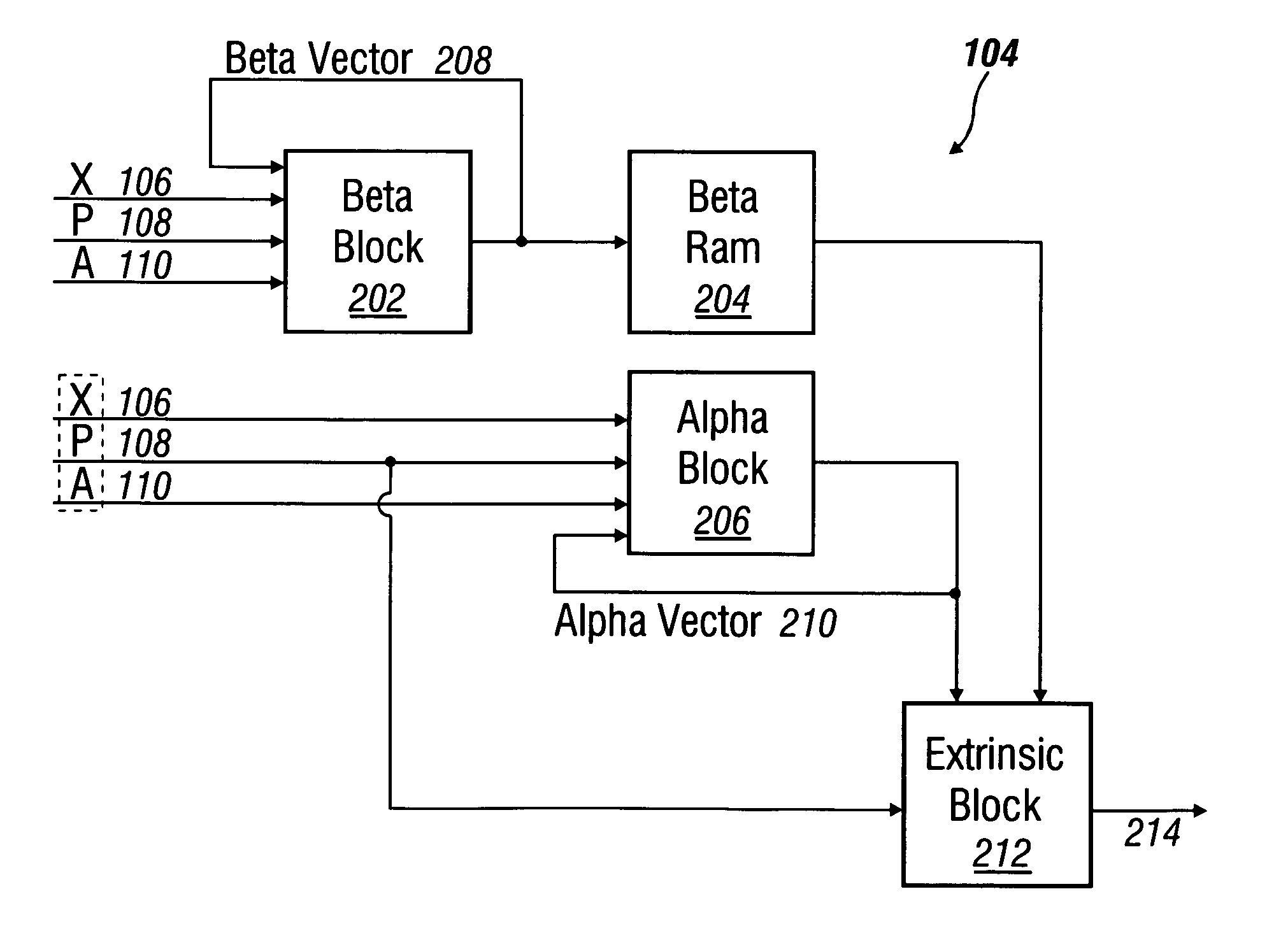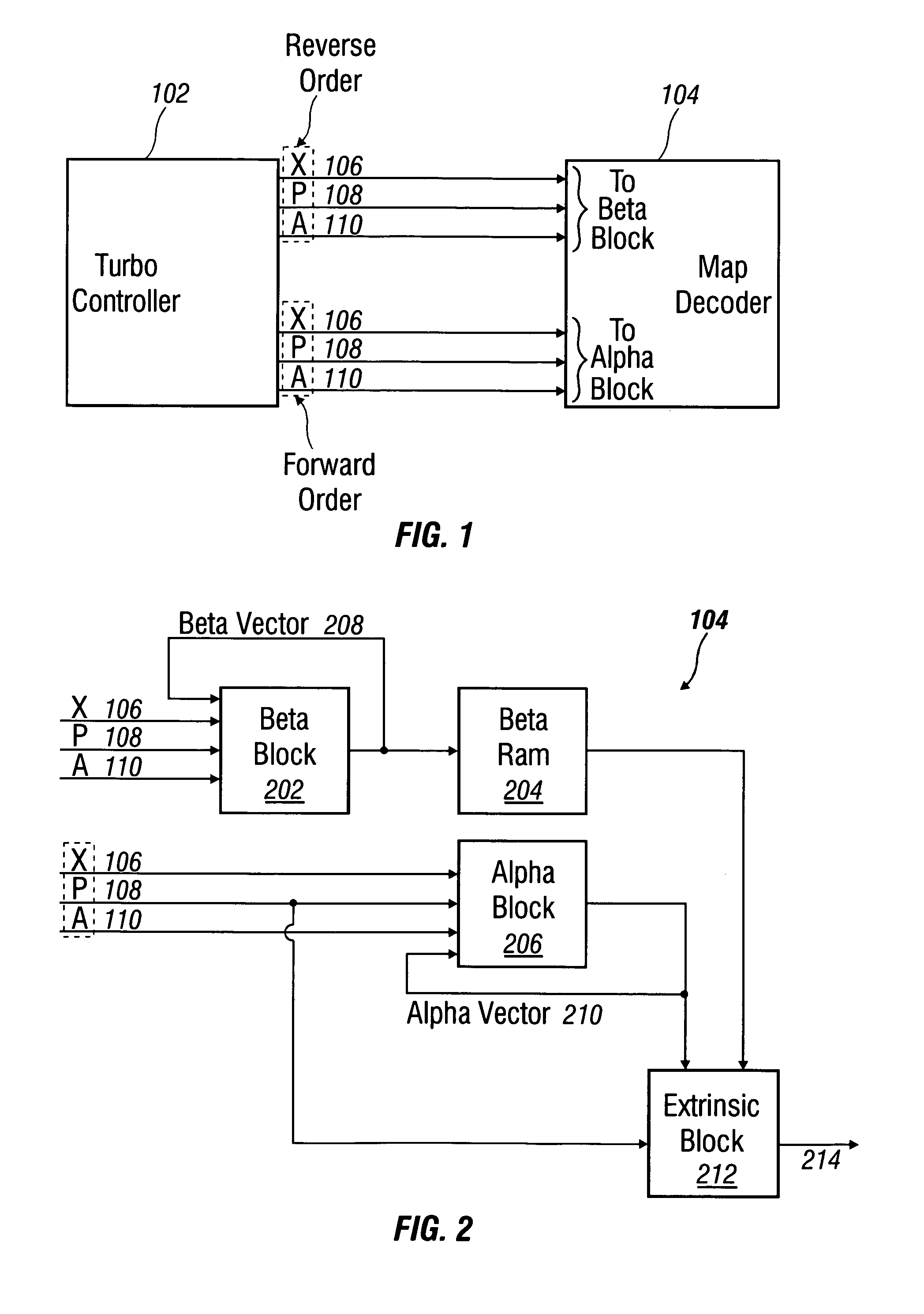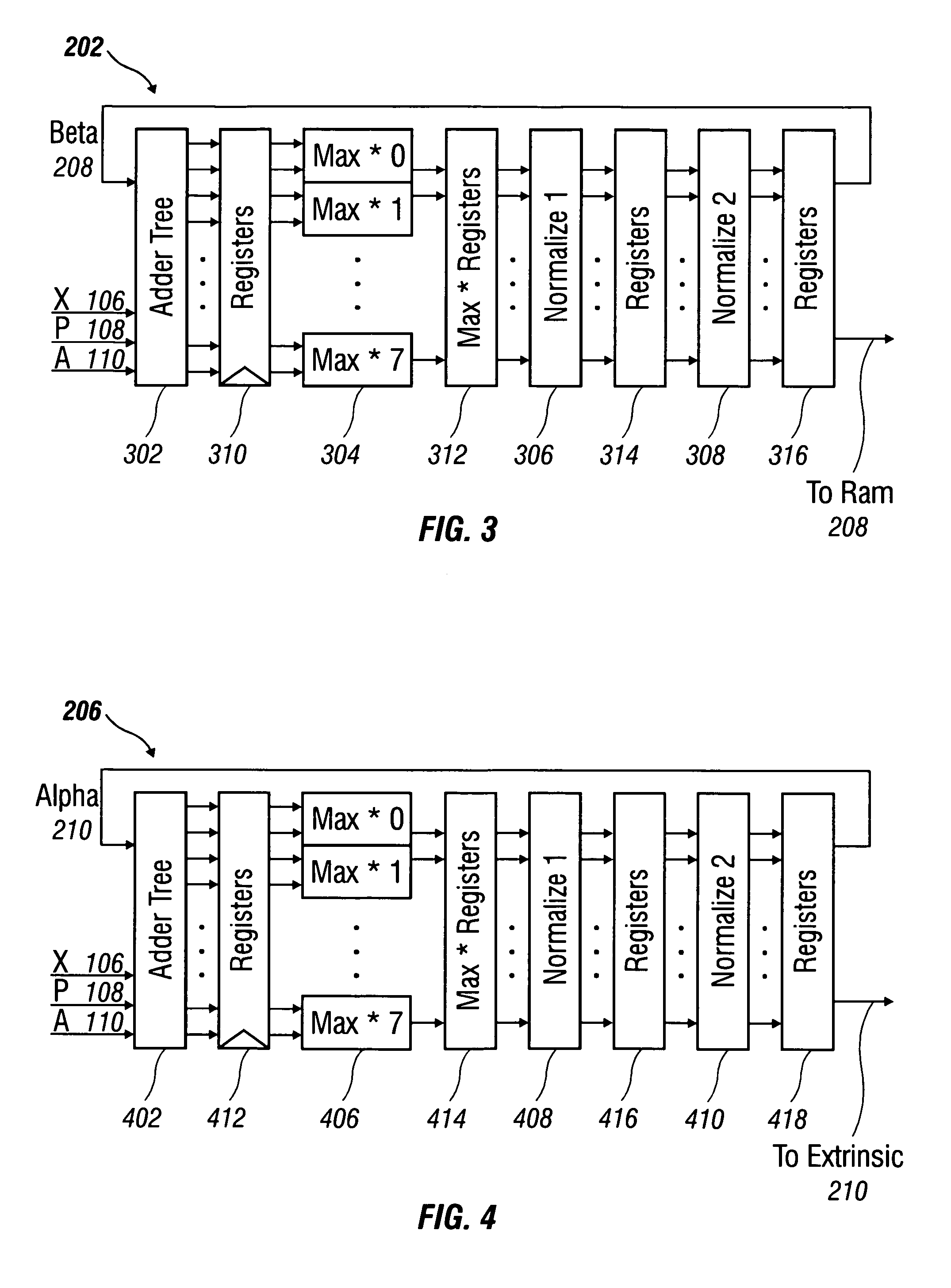MAP decoding with parallelized sliding window processing
a window processing and window decoding technology, applied in the field of wireless communication, can solve the problems that certain symbols cannot be directly followed by others, and the combination of forward and backward computation requires a substantial amount of memory, so as to reduce the memory requirements
- Summary
- Abstract
- Description
- Claims
- Application Information
AI Technical Summary
Benefits of technology
Problems solved by technology
Method used
Image
Examples
Embodiment Construction
[0032]The numerous innovative teachings of the present application will be described with particular reference to the presently preferred embodiment. However, it should be understood that this class of embodiments provides only a few examples of the many advantageous uses of the innovative teachings herein. In general, statements made in the specification of the present application do not necessarily delimit any of the various claimed inventions. Moreover, some statements may apply to some inventive features but not to others.
[0033]Concurrent operation of system hardware allows simultaneous processing of more than one basic operation. Concurrent processing is often implemented with two well known techniques: parallelism and pipelining.
[0034]Parallelism includes replicating a hardware structure in a system. Performance is improved by having multiple structures execute simultaneously on different parts of a problem to be solved.
[0035]Pipelining splits the function to be performed into...
PUM
 Login to View More
Login to View More Abstract
Description
Claims
Application Information
 Login to View More
Login to View More - R&D
- Intellectual Property
- Life Sciences
- Materials
- Tech Scout
- Unparalleled Data Quality
- Higher Quality Content
- 60% Fewer Hallucinations
Browse by: Latest US Patents, China's latest patents, Technical Efficacy Thesaurus, Application Domain, Technology Topic, Popular Technical Reports.
© 2025 PatSnap. All rights reserved.Legal|Privacy policy|Modern Slavery Act Transparency Statement|Sitemap|About US| Contact US: help@patsnap.com



